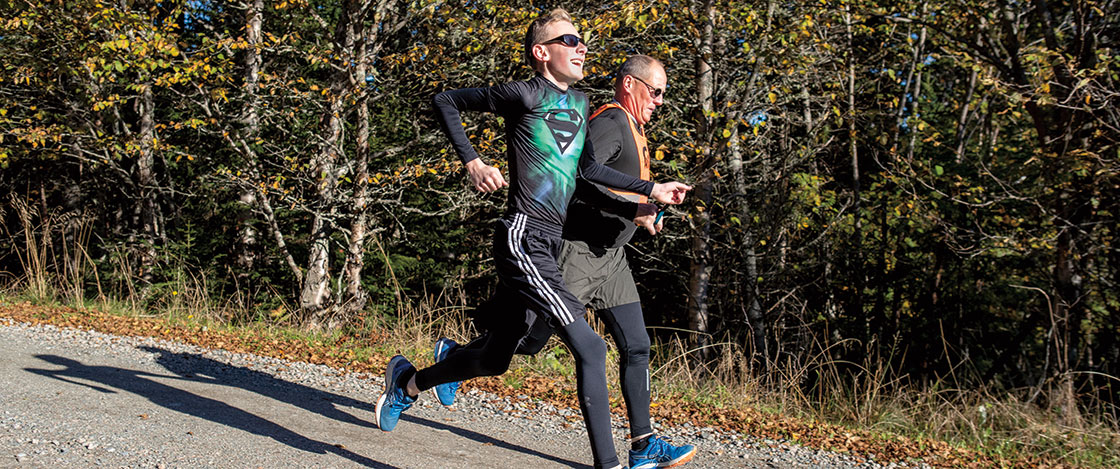Noah makes it all look easy—but of course he’s faced many challenges. Beals, Maine, where the Carvers live, is a rural area, and getting resources can be a struggle. When Noah was young, the school he attended couldn’t always offer the level of support he needed. So Noah’s mom Suzanne decided to become Noah’s full-time paraeducator. She wanted to make sure that Noah had the same opportunities as sighted children. When Noah was younger, she went with him to school, working with his teachers to ensure he had the materials he needed.
Suzanne also translates Noah’s schoolwork into Braille. Braille is a system of writing using raised dots that a blind person feels with his or her fingertips. Reading Braille has been key for Noah—and for his parents, who learned Braille as well.
In spite of his family’s best efforts, though, there have been many times over the years when Noah has been left out of activities or not given the chance to try something because someone assumed he wouldn’t be able to do it. It took years to find a piano teacher willing to take Noah on as a student. And though he has hosted many sleepovers, he has never been invited to stay over at someone else’s house.
Often one of the biggest challenges of being blind isn’t not being able to see; it’s dealing with what sighted people assume about blind people.
So Noah and his parents have learned to help people understand. For instance, when Noah was in middle school, he was cast in a role in a school musical that involved dancing. But Noah wasn’t included in the dance number.
When Suzanne found out, she spoke up, explaining to the musical director that Noah was perfectly able to learn the steps. Not surprisingly, he nailed them.
Perhaps toughest of all for Noah has been dealing with classmates who haven’t always been kind. In middle school, when Noah tried to sit down on the bus, kids around him would sometimes tell him to go sit somewhere else, away from them. And then there were moments like the start of recess, when everyone would just sprint out the door.
“It takes a good friend to remember to stop and walk out with me,” he says.
Even now, sometimes when Noah walks into the cafeteria, no one calls out to him and invites him to sit down. So instead, he walks up and down the aisles listening for a familiar voice and then asks if he can join the group.
“One thing that has been hardest for Noah is connecting,” says Suzanne. “So many of our interactions are visual. If he just has one or two people who reach out and say ‘Good morning’ or ‘Come sit with me,’ it is a game changer.”
Sometimes kids’ hurtful behavior is unintentional. Kids may be unaware that they’re being thoughtless. Other times, such behavior is deliberately cruel. Noah has experienced his fair share of bullying and exclusion for no other reason than the fact that he is blind.


